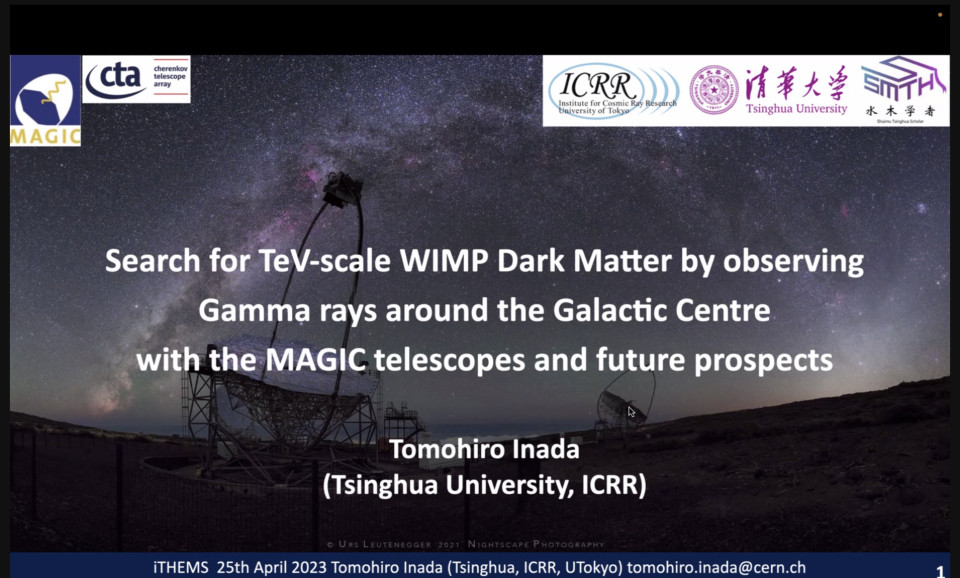DMWG Seminar: DM-line search in the Galactic Center with MAGIC telescope
Among kinds of dark matter (DM) candidates, weakly interacting massive particles (WIMPs) are the most intensively studied ones along their theoretical background and expectations for the signals in on-Earth experiments. However, up to now, our understanding of the regime of m>O(1) TeV is still limited since we cannot produce them at colliders and cannot expect a sufficient interaction rate at underground recoil detectors. High-energy astrophysical observations are powerful in probing that regime and projects all over the world are now searching for corresponding signals.
When we look for signatures of DM from astrophysical data, it is necessary to consider contributions from astrophysics very carefully. The key signatures could be the morphology of the emission, the spectrum, and correlating signals in other kinds of observations, variabilities, and so on. If DM particles annihilate to produce photon pairs, the spectrum should show a monochromatic peak corresponding to the mass of DM, hence it is distinctive against the astrophysical emissions.
MAGIC telescope, which locates in the Northern Hemisphere, only considers target objects in the northern sky previously. However, it actually can see the Galactic Center in a large inclination. For this case, the threshold of the analysis is worsened but the effective area is improved, then it can achieve a good sensitivity to high-energy emissions. Using 223h of observation at the Galactic Center with MAGIC, the line emission search is carefully performed. The determination of the "off" takes an important role in not overestimating the sensitivity and the sliding window technique is adopted regarding this point. The uncertainty of the DM density of the region of interest is also carefully discussed by performing the analysis applying both the cuspy and cored profiles.
No signatures of the monochromatic gamma-ray from DM annihilation are found in this analysis hence we obtain upper limits of the annihilation cross-section. The sensitivity is comparable to the flux level of a well-motivated Wino DM model which should exhibit annihilation lines around E~3TeV. This means that we are now approaching the era that to probe detailed particle models of DM with astrophysical observations. In the near future, observations with the Cherenkov Telescope Array will start operations and we can look into the detail of the models in combination with particle physics communities!
Reported by Nagisa Hiroshima

